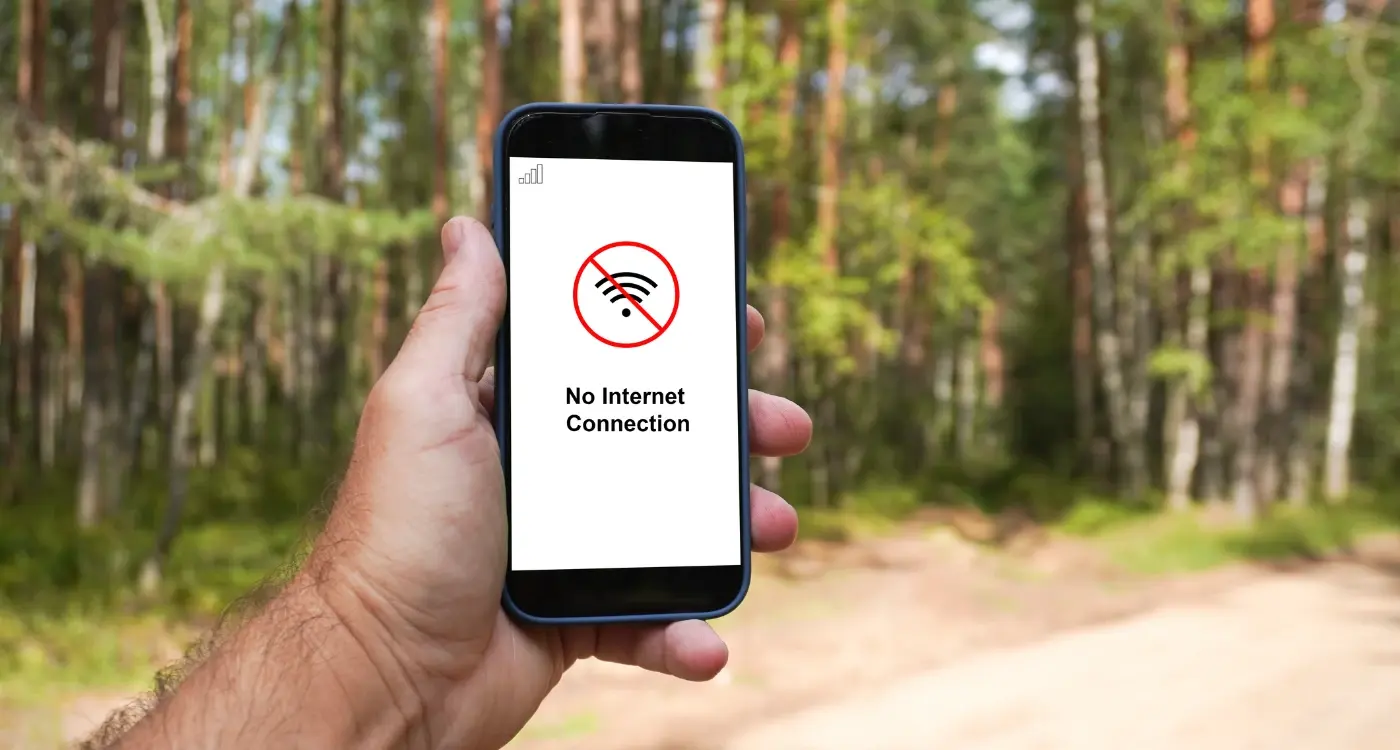Will My PWA Work Offline Like a Native App?
More than half of all mobile app downloads now come from progressive web apps rather than traditional native apps—and that number is growing fast. This shift is happening because PWAs promise to deliver the best of both worlds: the reach of the web with the functionality of native apps. But there's one question that keeps coming up in every conversation I have with clients: will my progressive web app actually work offline like a native app would?
The short answer is yes, but with some important caveats. PWAs can work offline, store data locally, and provide many of the same app capabilities you'd expect from a native app. They're not quite identical though, and understanding these differences can save you from making costly assumptions about what your app can and can't do.
The real power of PWAs isn't just in matching native app functionality—it's in providing offline capabilities that work across all devices without requiring separate development for each platform
Throughout this guide, we'll explore exactly how PWA offline functionality works, where it excels, and where it falls short compared to native apps. By the end, you'll have a clear understanding of whether a progressive web app can meet your offline requirements—and what you need to know to make it work properly.
What Is a Progressive Web App?
Right, let's get straight to the point—a Progressive Web App (PWA) is basically a website that behaves like a mobile app. Think of it as a clever hybrid that combines the best bits of both worlds. You can access it through your web browser like any normal website, but it can also be installed on your phone's home screen and work without an internet connection.
The Building Blocks
PWAs are built using standard web technologies like HTML, CSS, and JavaScript—the same stuff that powers every website you visit. What makes them special is how they're put together. They use something called a service worker (a bit of code that runs in the background) and a web app manifest (a file that tells your device how to display the app).
What Makes Them "Progressive"
The "progressive" part means they work for everyone, regardless of what device or browser they're using. Got an old phone? It'll work as a basic website. Got the latest iPhone? You'll get the full app-like experience with push notifications, offline access, and smooth animations. PWAs automatically adapt to what your device can handle—no need for different versions or complicated installations from app stores.
The real magic happens when you realise PWAs can do most things native apps can do, but they're much easier to build and maintain.
How PWAs Handle Offline Functionality
Progressive web apps use something called a service worker to make offline functionality possible. Think of it as a clever background helper that sits between your app and the internet—it watches what your app needs and quietly saves important bits for later use.
Service Workers and Caching
When you first visit a PWA, the service worker springs into action. It downloads and stores the app's shell (the basic structure and design) plus any content you've already looked at. This means next time you open the app without internet, you'll still see the familiar interface and your previously viewed content.
The really smart bit is how PWAs decide what to cache. They can store your most-used features, recent conversations, or articles you've read. Some apps even let you manually download content for offline use—like saving a map before travelling somewhere with poor signal.
Background Sync
PWAs can also queue up actions you take whilst offline. Send a message or fill out a form without internet? The app remembers and automatically sends it once you're back online. You don't need to worry about losing your work or remembering to retry failed actions.
The quality of offline functionality depends heavily on how well the PWA is built. A well-designed progressive web app can feel almost identical to a native app when offline.
Comparing PWA Offline Features to Native Apps
When I'm working with clients who want to build PWAs, one of the most common questions I get is about offline performance. They want to know if their PWA will work just like a native app when there's no internet connection. The short answer is: it depends on what you're trying to do.
Native apps have always had a big advantage when it comes to offline functionality. They can store lots of data directly on your device, run complex calculations without internet, and access device features like your camera or GPS even when you're offline. PWAs have come a long way in recent years, but they still can't match everything a native app can do.
What PWAs Can Do Offline
PWAs can handle quite a lot without an internet connection. They can show cached pages, let you fill in forms, play stored videos, and even run simple games. The key is that all this content needs to be downloaded and stored beforehand.
Where Native Apps Still Win
Native apps can access more device storage, work with complex databases offline, and integrate deeply with your phone's operating system. They're also better at handling large files and running processor-intensive tasks without internet.
- Native apps can store unlimited data (within device limits)
- PWAs have storage quotas that browsers enforce
- Native apps can access more device features offline
- PWAs rely on browser permissions for device access
- Native apps can run background processes more freely
For most business applications—think booking systems, content sites, or simple productivity tools—PWAs can provide excellent offline experiences. But if you're building something that needs heavy data processing or extensive offline functionality, native might still be your best bet.
The Technology Behind PWA Offline Capabilities
The magic behind progressive web app offline functionality comes down to three key technologies working together. Service workers act as the brain of the operation—they're JavaScript files that run separately from your main web page and can intercept network requests. Think of them as your app's personal assistant that never sleeps, always ready to serve up cached content when the internet goes down.
Cache API and Application Cache
The Cache API works hand-in-hand with service workers to store files, images, and data locally on your device. When you visit a PWA for the first time, it quietly downloads and stores the most important parts of the app. This means when you lose connection, the app can still function using this stored information.
IndexedDB for Data Storage
For more complex data storage needs, PWAs use IndexedDB—a powerful database that lives right in your browser. It can store user preferences, form data, and even entire databases offline. This is what allows apps like Google Docs to let you keep working on documents without internet.
The combination of service workers, Cache API, and IndexedDB gives PWAs nearly the same offline capabilities as native apps, but using web technologies that work across all platforms.
What makes this technology stack so clever is how it prioritises what to cache. Developers can set up strategies to cache the most important content first, ensuring users get the best possible offline experience even with limited storage space.
Limitations of PWA Offline Performance
Let's be honest about this—PWAs aren't perfect when it comes to offline functionality. I've worked on enough projects to know that there are some real limitations you need to understand before making the switch from native apps.
The biggest issue is storage capacity. PWAs are limited by browser storage restrictions, which means you can't cache massive amounts of data like a native app can. Most browsers cap storage at around 50MB to 100MB, and that fills up quickly if you're dealing with images, videos, or large datasets.
Platform-Specific Challenges
Different browsers handle PWAs differently, and this creates inconsistencies. Safari on iOS is particularly restrictive—it clears PWA caches after just seven days of inactivity. Chrome and Firefox are more generous, but you're still at the mercy of browser policies that can change without warning.
Real-time features suffer too. Push notifications work differently across platforms, and some offline database operations that native apps handle smoothly can be clunky in PWAs. Background sync is limited, so your app might not update data as seamlessly as users expect.
Performance Considerations
Here are the main technical limitations you'll encounter:
- Limited access to device hardware and sensors
- Slower performance for complex operations
- Inconsistent behaviour across different browsers
- Restricted file system access
- Battery usage optimisation challenges
These limitations don't make PWAs unsuitable—they just mean you need to plan accordingly and set realistic expectations for your offline functionality.
Best Practices for Building Offline-Ready PWAs
Building a progressive web app that works seamlessly offline isn't just about throwing in a service worker and hoping for the best. I've seen too many developers make this mistake over the years, and it always leads to frustrated users and poor app performance. The key is planning your offline strategy from the very beginning of your project.
Start by identifying which parts of your app are most important when users can't connect to the internet. This might be viewing previously loaded content, completing forms, or accessing saved data. Once you know your priorities, you can build your caching strategy around these core features.
Smart Caching Strategies
Your service worker needs to be selective about what it caches. Don't try to cache everything—that's a recipe for disaster and will slow down your app considerably. Instead, focus on the content that matters most to your users.
- Cache your app shell (HTML, CSS, and JavaScript files) first
- Store frequently accessed data and images
- Implement background sync for form submissions
- Use cache-first strategies for static assets
- Apply network-first approaches for dynamic content
User Experience Considerations
Being offline-ready isn't just about technical implementation—it's about creating a smooth user experience. Your progressive web app should clearly indicate when it's offline and what functionality remains available. Users shouldn't have to guess whether something will work or not.
Always test your offline functionality on real devices with actual network conditions. Simulators don't capture the full offline experience that your users will encounter.
Remember that offline app capabilities need regular maintenance. Your caching strategy should include automatic updates and cleanup to prevent your app from becoming bloated with old data.
Conclusion
After building PWAs for countless clients over the years, I can confidently say that yes—your PWA will work offline like a native app in most situations. The technology has come a long way and service workers have made offline functionality incredibly robust. You'll be able to cache your app shell, store data locally, and provide users with meaningful offline experiences that rival what native apps can do.
But—and this is important—there are still some limitations to keep in mind. PWAs can't access every device feature that native apps can, and complex offline synchronisation might require more planning than you'd expect. The key is understanding what your users actually need when they're offline and building for those specific scenarios.
The beauty of PWAs lies in their flexibility; you can start simple and gradually add more sophisticated offline features as your app grows. Most businesses find that PWAs offer more than enough offline capability for their needs, especially when you consider the development cost savings and cross-platform benefits.
If you're still unsure whether a PWA is right for your project, think about your users' offline requirements first. Do they need to browse cached content, fill out forms, or perform complex data manipulation without internet? Understanding these needs will help you make the right choice for your app's future.
Share this
Subscribe To Our Learning Centre
You May Also Like
These Related Guides

How Do I Choose Between Native and Hybrid Development?

Should My Mobile App Work Without an Internet Connection?



